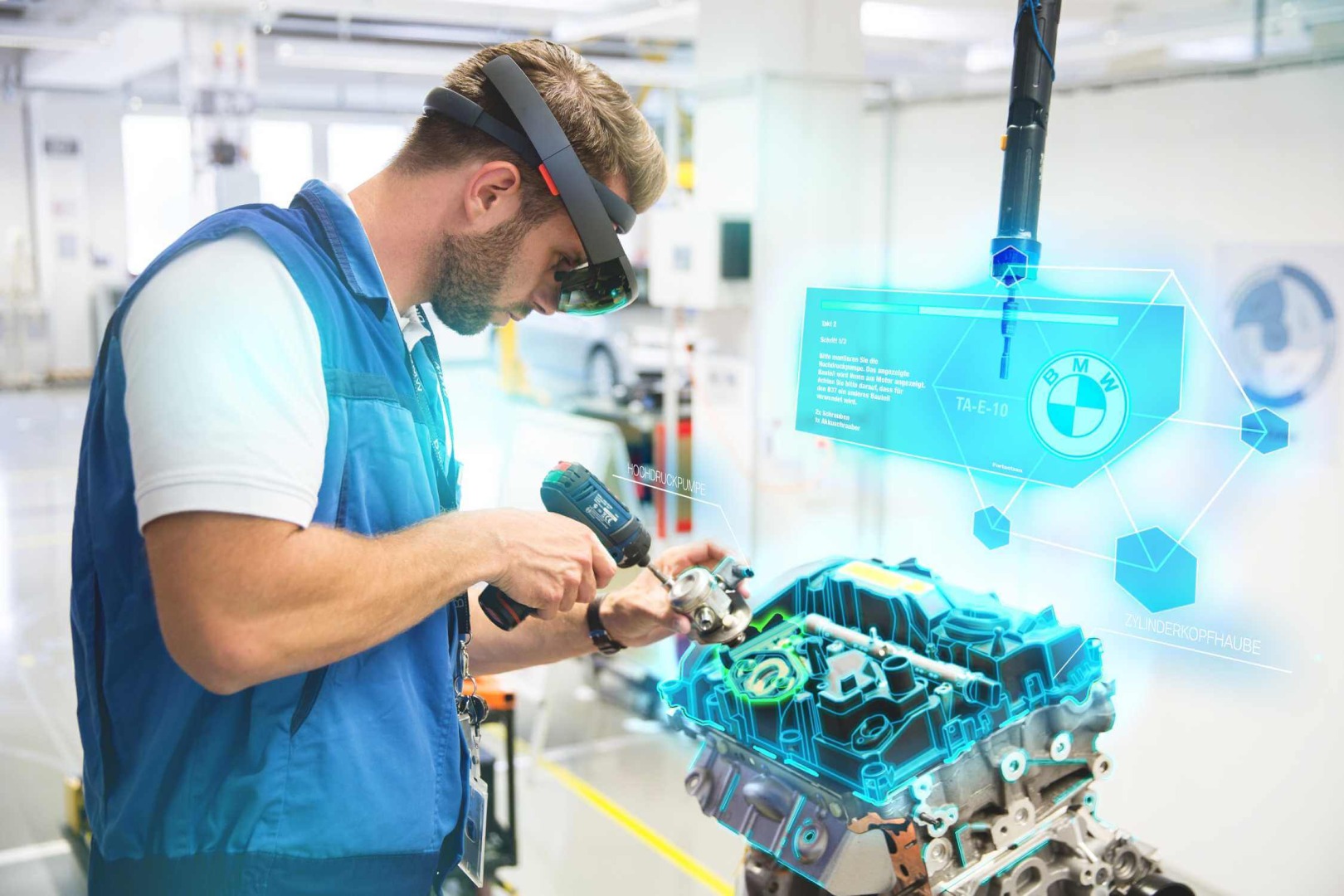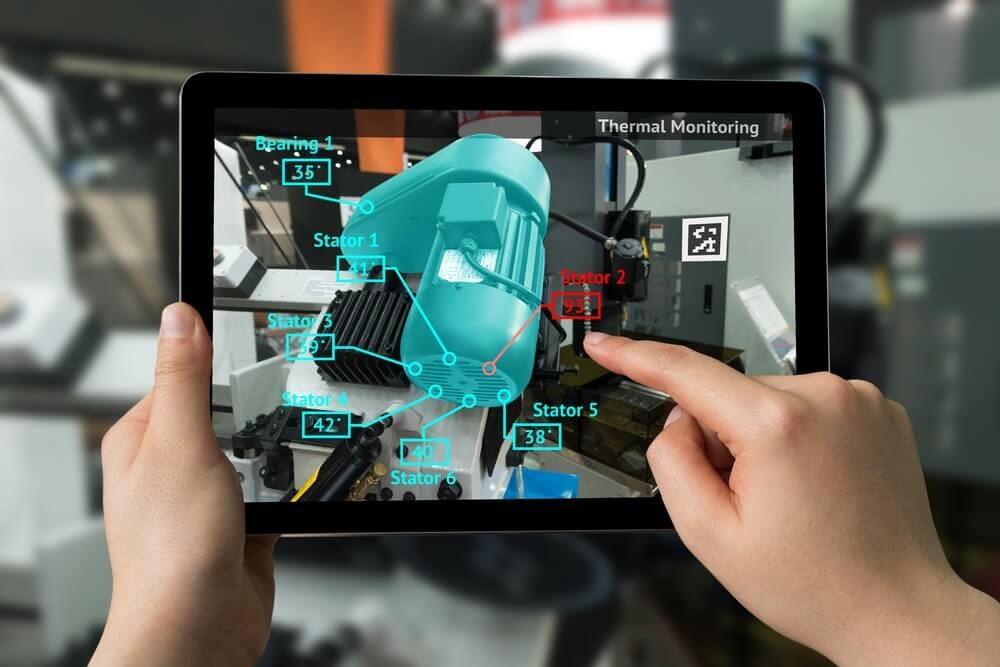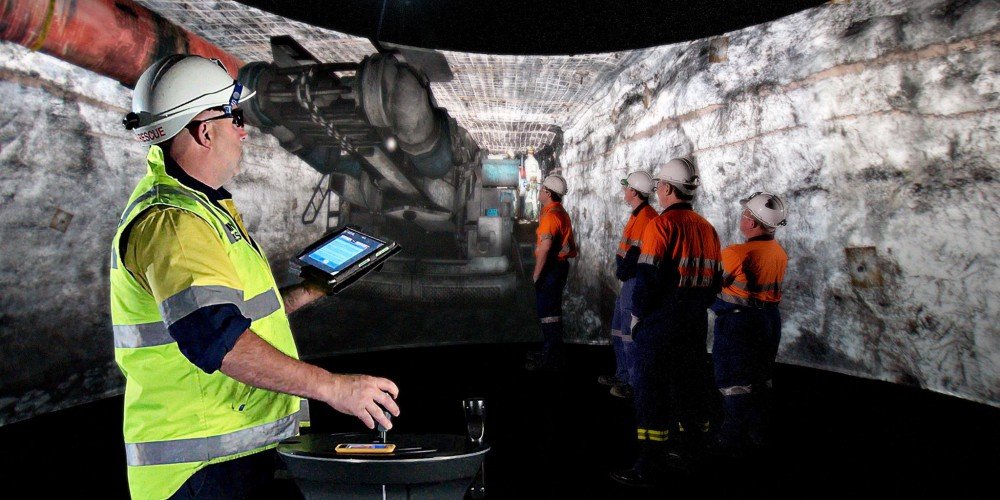Comments
- No comments found

Immersive technologies like augmented reality (AR) can create rich, contextual user experiences in amazing ways.
With technological advancements, the coming years will see greater adoption of AR in the corporate world, ensuring this exciting innovation soon becomes a vital part of our professional lives.
For starters, AR can smoothen processes and optimize learning outcomes for on-the-job training. In this article, we delve into augmented reality training, specifically wearable AR for training as well as the future of AR in the workplace.

Generally, two types of wearable devices can be used in AR for training. Users can opt for the headset or the smart glass, more precisely called augmented reality glass. While both wearable AR devices have unique merits and disadvantages, augmented reality glasses are typically more immersive and interactive.
The HMT connects to a helmet and grants the user a picture-in-picture perspective in their indirect vision. HMTs are handy devices, especially in fields where special technical operations and safety inspections are necessary. This could be applicable to the manufacturing, telemedicine, automotive, and oil and gas industries.
As an HMT wearer, you can receive hands-free cooperation with experts who are connected with you remotely. You can always obtain explicit instructions and training in your ear from these experts, who may also access your vantage point like they were in your shoes.
With this kind of wearable AR device, the user can make documents pop up before their eyes through a small mini-tablet view by issuing simple voice commands. This is particularly useful for digitized workflows and optimized data visualization and is suitable for relaying training.
While HMTs have handy advantages in various fields and in corporate training, they may fall shy of capabilities that permit more complex and graphically intensive applications. It’s fair to say that while conventional computers are more suitable for such complex systems, immersive technology companies are working hard to counter this challenge.
You can be fairly confident that ongoing innovations in wearable AR will soon make HMTs just as powerful as PCs while mounted on your head.
Augmented reality glasses, or smart glasses, are inarguably the most immersive and AR devices that offer remarkable visual appeal. AR glasses can be effectively employed in training because of their capabilities like integrated reality visual guidance that frequently involves stepwise checklists and instructions.
And just like their HMT counterparts, augmented reality glasses allow you to collaborate remotely with experts around the globe while letting them see what you see as information is relayed in real-time.
Smart glasses can be employed on duty to help workers in the field minimize mistakes and maximize productivity. They offer the wearer an immersive overlay of graphical information from an AR perspective.
A great example would be in manufacturing, where service teams can connect frontline technicians with professionals through these smart glasses. This allows them to conduct quick fixes and ensure less costly mistakes.
Savvy business owners appreciate the role of new trends and technologies that can impact their organizations and help them gain a competitive edge. Augmented reality training has been shown to enhance key aspects and operations of organizations, including staff training.
Research shows that hands-on training greatly improves learning outcomes. Wearable AR technology in particular helps create an immersive environment where no one has to leave the workplace.
At the same time, trainers enjoy much better ways of illustrating and explaining concepts and ideas. And by incorporating AR in training under expert supervision, learners are highly likely to recall steps the next time they’re presented with tasks.
The aerospace giant Boeing uses AR glasses powered by Upskill’s Skylight technology to guide technicians as they wire several planes every year. Furthermore, engineers can use superimposed imaging using AR instead of the hectic traditional process of referencing blueprints. The result is that Boeing has considerably reduced errors in aircraft manufacturing while cutting down on production time by up to 25%.
TK Elevator makes use of the Microsoft HoloLens to help train elevator maintenance crews on elevator repair. AR training tech allows them to view useful digital overlays of operation guides and manuals.
The multinational consumer goods company Unilever isn’t behind either. The company has successfully employed AR for training such that expert technicians with a richer experience upskill new employees. In effect, Unilever has been able to solve problems more quickly, minimize downtime by up to 50%, and overall registered an incredibly huge ROI.

Having delivered on the promise of enhancing productivity in the workplace, improving training and occupational safety, renowned corporations, tech experts, and thought leaders are optimistic that AR technology has the potential of revolutionizing the future.
A report by Statista indicates that standalone head-mounted displays (HMDs) accounted for 74.7% of total AR headset shipments globally in the first quarter of 2020 alone. This illustrates the tremendous demand for wearable AR devices and augmented reality training.
Goldman Sachs is bullish on immersive technology trends and forecasts that AR and VR will grow into a $95 billion market by 2025. Furthermore, Goldman Sachs’ tech analyst Heather Bellini says that the AR/VR/mixed reality movement will forever transform how we interact with technology.
ABI Research also reports that AR is becoming mainstream technology with growing demand and further projects that the AR total market share will exceed $140 billion by 2025. ABI Research’s Augmented and Mixed Reality Market Data shows that there will be 32.7 million total shipments of smart glasses in 2022, a considerable upsurge since 2017 when the figure played around 225,000.
On top of these, companies are dedicating greater hardware efforts towards improving AR technology. These could significantly transform the field of view, ruggedness, and weight of wearable AR devices while overcoming their outdoor limitations.
Leave your comments
Post comment as a guest